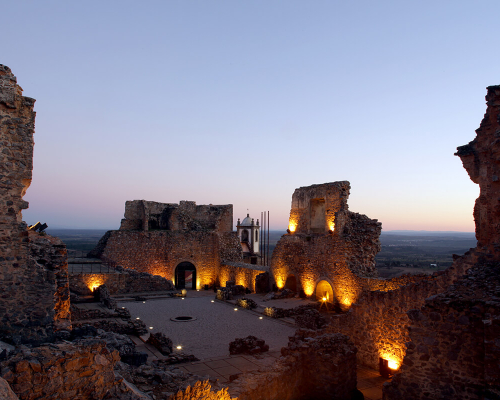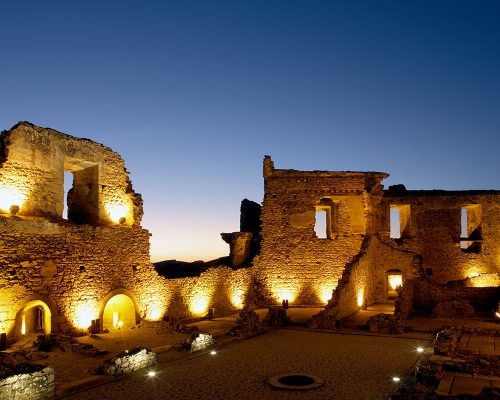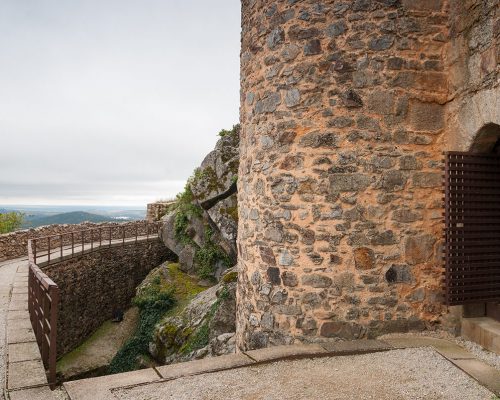Cristóvão de Moura Palace
Castelo Rodrigo
Castelo Rodrigo
The Philippine dynasty took over the Portuguese throne because of the succession crisis in 1580, due to the fact that King Sebastião was killed in the Battle of Alcácer-Quibir. It would have a direct impact on the old town of Castelo Rodrigo. Cristóvão de Moura, son of the old mayor of the town and a key figure in its diplomacy during the 1580 crisis commissioned his palace in Castelo Rodrigo in the exact location of the citadel. This man’s importance in the administration of Portugal during the Philippine reign is made clear by the fact that Felipe II of Spain made the town a county and awarded the title of Count to his favourite adviser Cristóvão de Moura (1594). When the king died, his successor, Felipe III, dubbed him (1600) the first Marquis of Castelo Rodrigo. When Portuguese independence was restored, the palace, a symbol of Spanish oppression, was burned down by the local population and is currently in ruins. After 1640, the palace was torn down by the local people, who regarded it as a symbol of Spanish domination, even though its owner had died 30 years before. The palace was of military importance in the 18th and 19th centuries and was restored, but only recently did it undergo “consolidation of its ruins” by IPPAR with support from Aldeias Históricas de Portugal. Today it is a symbolic place where cultural events can be held.




